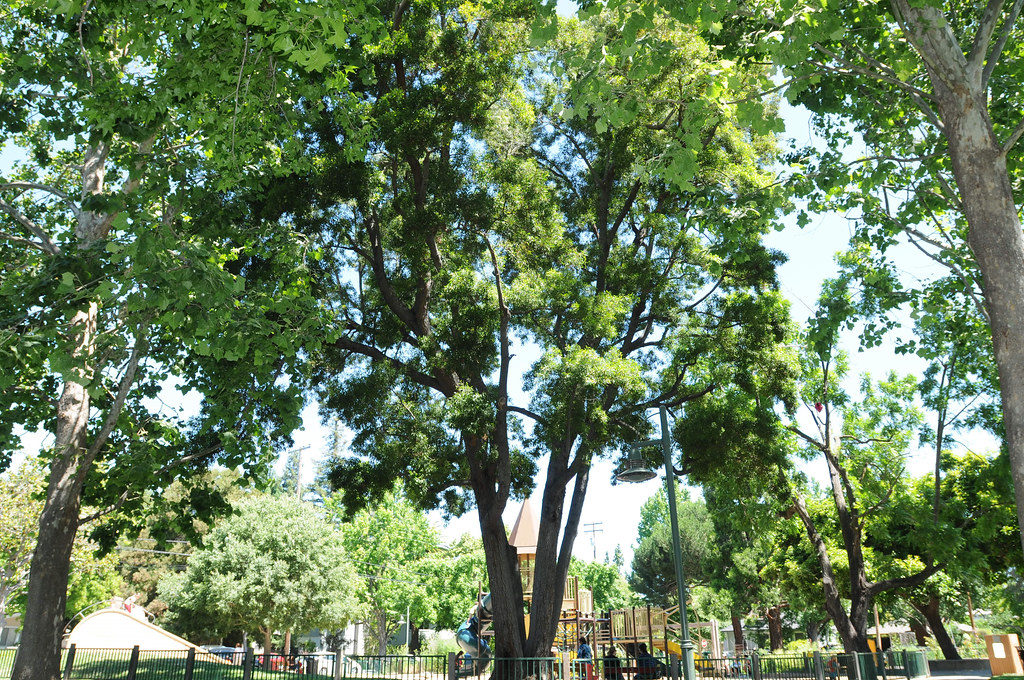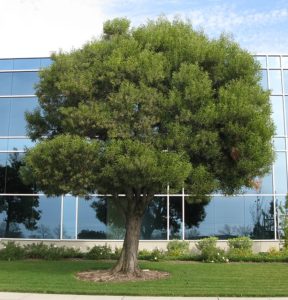- About Us
- Our Work
- Tree Info
- Get Involved
- Blog
- Volunteer
- Support Us
By Canopy Team on June 10, 2019

Tree Spotlight Series: Follow along as we learn about the fascinating trees that live among us. This series is in partnership with Rhee Lab in the Plant Biology Department of the Carnegie Institution for Science.
Other posts in the series: ginkgo biloba, Douglas fir, giant sequoia, Chinese tallow, silver-dollar gum, Monterey pine, green dracaena, coast live oak, cork oak, Japanese maple, silver birch, dawn redwood, Japanese persimmon ‘Hachiya’, carob, California bay, avocado, southern magnolia, flowering dogwood, and red ironbark eucalyptus.
 An Aggressive Tree
An Aggressive TreeThe blackwood acacia, Acacia melanoxylon, is a fast-growing tree from southeastern Australia. The genus that this tree belongs to, Acacia, is well known for its fire resistance and for fixing nitrogen.
The tree can grow up to 50 feet tall, about 5 stories, while producing many seeds that can rapidly grow into trees under sub-optimal conditions. The species grows clusters of 30-56 pale yellow to white flowers that appear fluffy due to numerous stamens. These flowers grow fruits that appear as elongated and flattened pods with leathery seeds.
Once the seeds are dispersed, they germinate quickly, especially after fire has cleared space in the forest. The aggressive spread of the blackwood led to it being declared a noxious weed in South Africa and a pest in the Azores Islands where they threaten native vegetation as well as pavements and underground plumbing.
The primary uses for the blackwood acacia revolve around its physical qualities. With wood that is gorgeous golden or reddish brown, the tree is highly valued for timber. Along with being decorative, the wood is strong and stiff, but can still be nailed with ease, and easily stained with paints, all valuable qualities for timber. The timber has been used for cabinets and other furniture, musical instruments, wood panels, tools, kegs, and boat building.
Due to its ability to stand off against fires, the tree can also be used agriculturally as a natural fire barrier to protect crops in dry, arid climates. Finally, the Aboriginals in Australia derived weapons from the tree’s wood, such as spears, shields, and a native weapon of the Australian outback: boomerangs.
While it may seem like the tree’s uses revolve around timber products, there is more going on below the surface, in the blackwood acacia’s roots. This tree fixes N2, which means that the blackwood acacia plays a vital role in the nitrogen cycle (Figure to the right).
The way the blackwood acacia increases nitrogen availability in the soil is through symbiotic bacteria – rhizobia – that are housed in the tree’s roots. These bacteria take atmospheric nitrogen gas and convert it into ammonia, which plants can then assimilate.
Evolution drives the selection of organisms with the qualities that help them survive the best. This process resulted in the blackwood acacia, a tree that by helping itself survive, also helps its ecosystem through its role in the nitrogen cycle.
See the blackwood acacia in person! The tree is included in Canopy’s Downtown North Tree Walk and College Terrace Tree Walk.

Ankush Bharadwaj was a 2018 summer intern at the Rhee Lab in the Plant Biology Department of the Carnegie Institution for Science. He is currently an undergraduate student majoring in Microbiology, Immunology, and Molecular Genetics at the University of California, Los Angeles. His hobbies include being outdoors, where he usually spends his time kayaking, hiking, or simply skateboarding around.